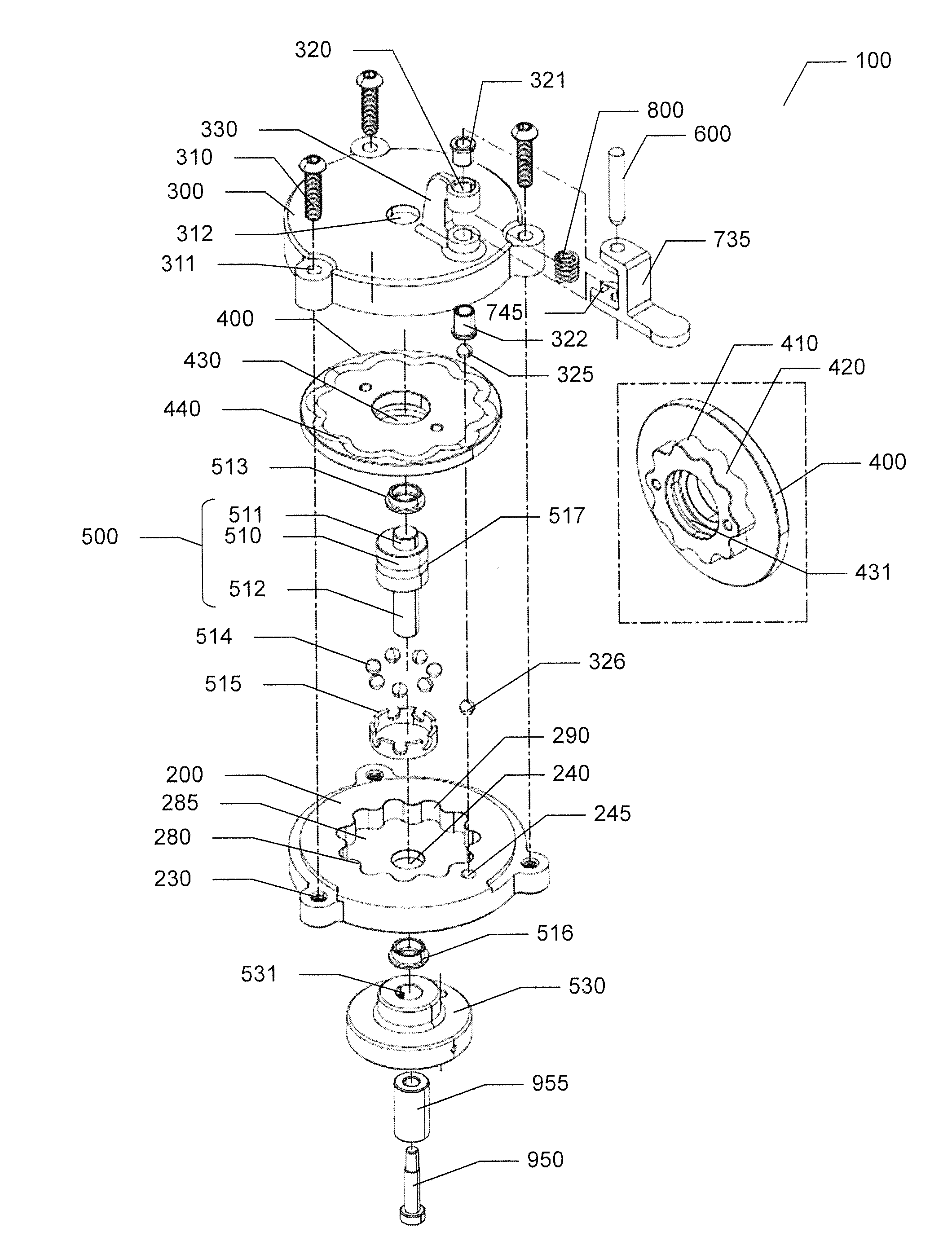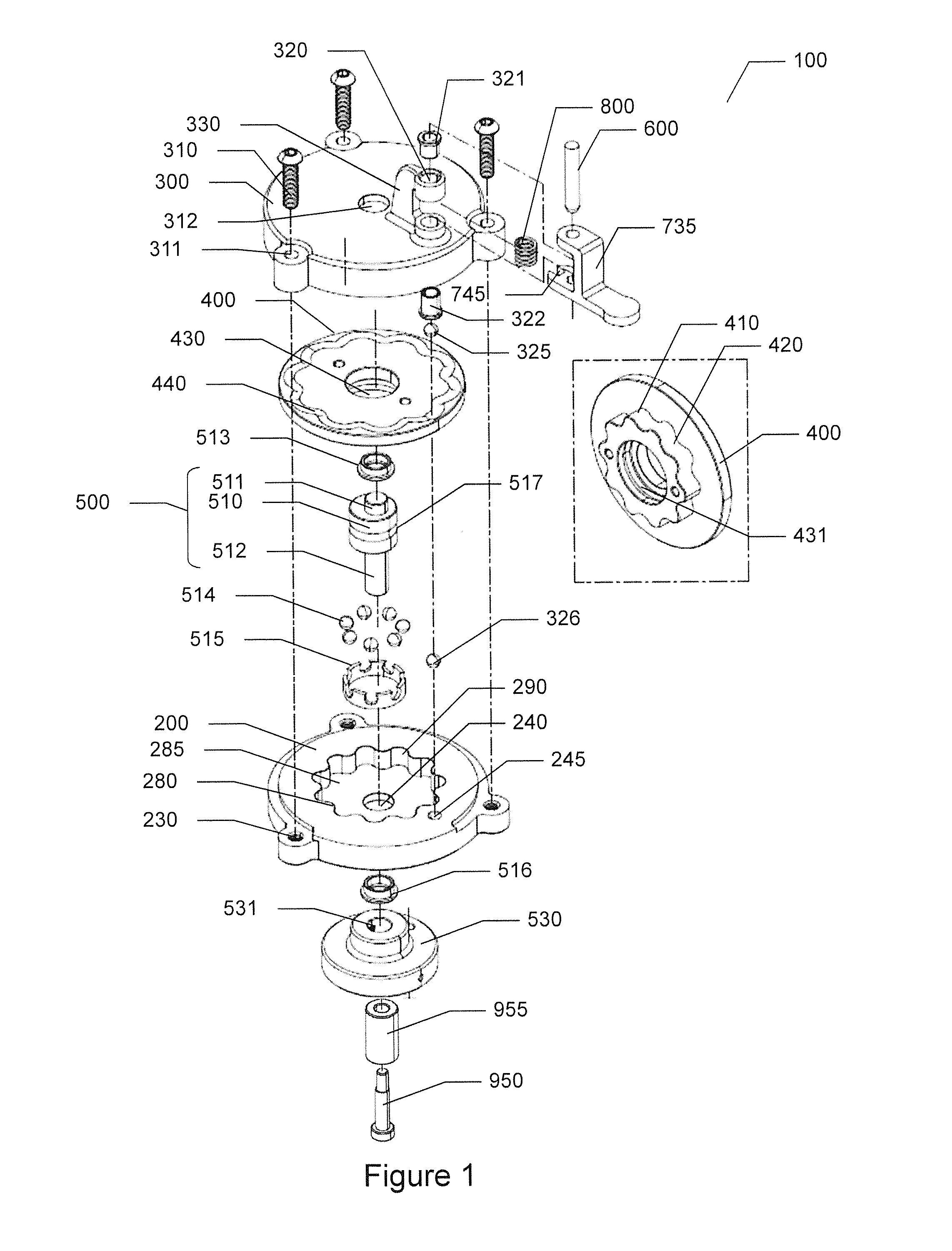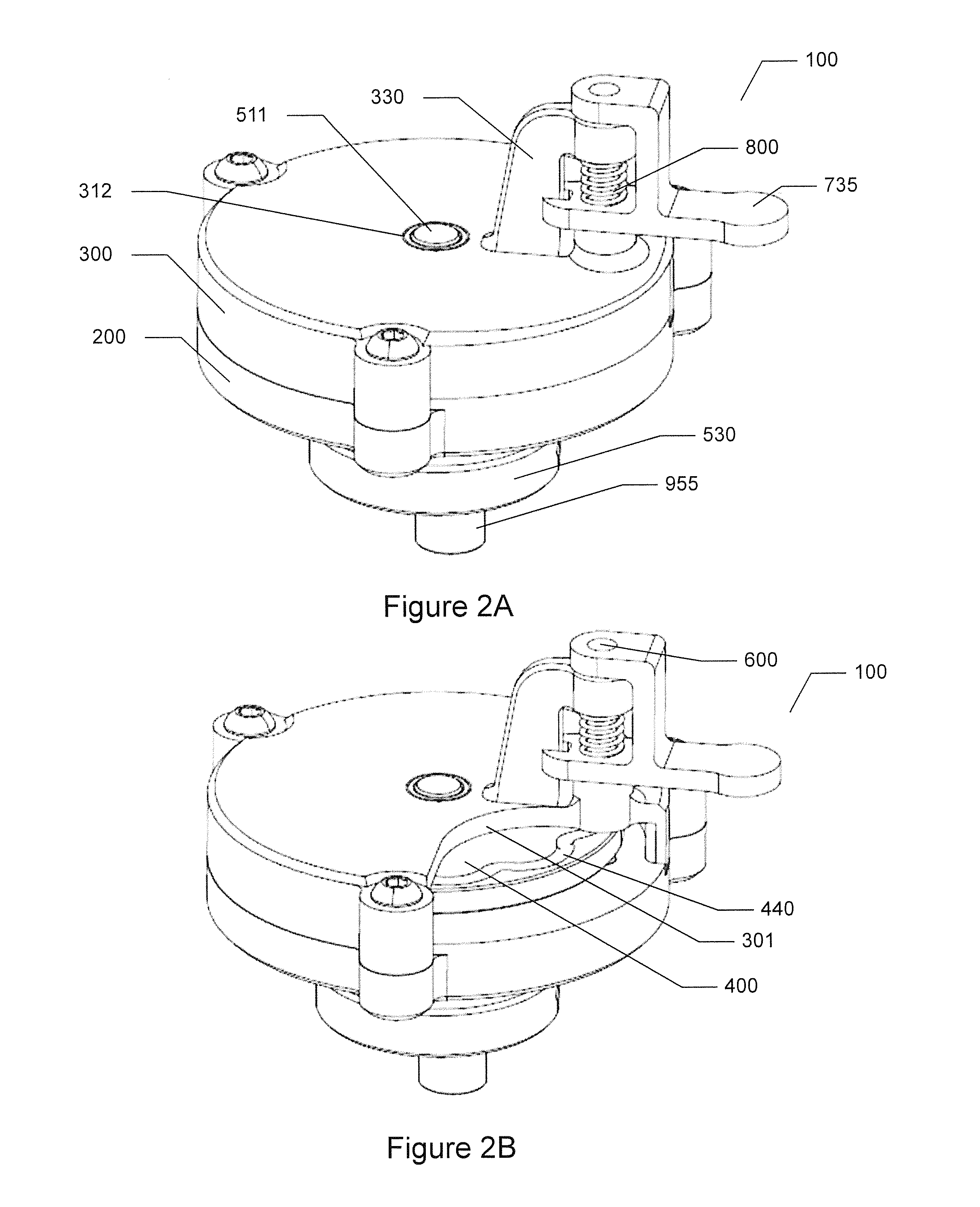Cycloid drive epicycloid planet gear cam
- Summary
- Abstract
- Description
- Claims
- Application Information
AI Technical Summary
Benefits of technology
Problems solved by technology
Method used
Image
Examples
Embodiment Construction
[0034]Reference will now be made in detail to the preferred embodiments of the present invention, examples of which are illustrated in the accompanying drawings. Wherever possible, the same reference numbers are used in the drawings and the description to refer to the same or like parts.
[0035]Refer to FIGS. 1, 2A-2B, and 3A-3B. Note that FIGS. 2B and 3B include a cutaway 301 in the housing cap for clarity in illustrating the epicycloid planet gear 400, cam track 440 and follower pin 600 positioning. The epicycloid planet gear cam, also called the cycloid drive cam, 100 of the present invention comprises a stationary housing 200, a housing cap 300, an epicycloid planet gear, also called a cycloid disc, 400, a driveshaft eccentric 500, and a cam follower pin 600.
[0036]The stationary housing 200 comprises an internal stationary ring gear 285. The epicycloid planet gear 400 and the driveshaft eccentric 500 are assembled inside the stationary housing 200 and the housing cap 300 is assemb...
PUM
 Login to View More
Login to View More Abstract
Description
Claims
Application Information
 Login to View More
Login to View More - R&D
- Intellectual Property
- Life Sciences
- Materials
- Tech Scout
- Unparalleled Data Quality
- Higher Quality Content
- 60% Fewer Hallucinations
Browse by: Latest US Patents, China's latest patents, Technical Efficacy Thesaurus, Application Domain, Technology Topic, Popular Technical Reports.
© 2025 PatSnap. All rights reserved.Legal|Privacy policy|Modern Slavery Act Transparency Statement|Sitemap|About US| Contact US: help@patsnap.com



